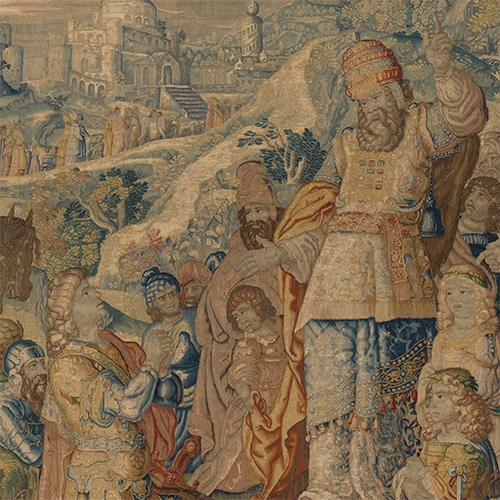Afzetters at Work
‘Touching up’ in the Diana and Alexander Tapestries by François Spiering and Karel van Mander II
DOI:
https://doi.org/10.52476/trb.12232Abstract
During the restoration of two highly accredited tapestries (2013-21) from the Rijksmuseum collection, Niobe’s Pride (BK-1954-69-A) and Alexander and Jaddua (BK-1961-52), we discovered an interesting phenomenon that warranted further investigation. It concerns retouches that are not the result of restorations but, because of the colour and placement, are reminiscent of the work of afzetters.
The tapestries were woven in the early seventeenth century in the workshops of François Spiering and Karel van Mander II in Delft, and are part of the Tapisserye van Diana set and the series showing the life of Alexander the Great respectively. In collaboration with the Cultural Agency of the Netherlands (RCE) (chemical) research was conducted into the nature of the materials used for afzetten and the dyes were analysed. Three tapestries, from the National Trust Collections (UK) and Museum Prinsenhof Delft, which form part of the series, were also involved in the research. In this article we examine the history of the development of afzetten, and the resulting regulations that Charles V established in 1544 in his Ordinances. This is followed by the presentation of the first research results regarding the positions and nature of the retouches, and the extent to which Charles V’s rules were followed.
Downloads







